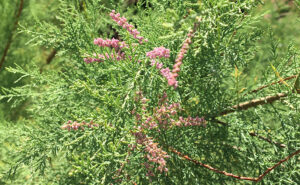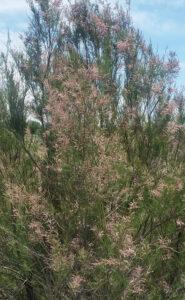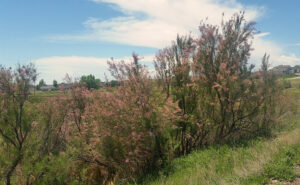Saltcedar
Salvia aethiopsis
Tamarix chinensis
Tamarix ramosissima
Saltcedar, also known as Tamarisk, was introduced into the United States in the 1800’s. Saltcedar was planted as an ornamental, to stabilize riverbanks and also as a windbreak. Saltcedar has displaced native vegetation on approximately 1.6 million acres of land. Seedlings can survive flooding and drought. This species secretes salt at a high rate on the ground and in the soil, which inhibits native plants from growing.
This plant is a deciduous shrub or small tree. Petals and sepals are arranged in groups of five, they are mostly pink, sometimes white. The plants flower anytime between April and August. The leaves are small, scale-like and bluish-green in color.
Salt cedar reproduces by seed (up to 600,000 a year) and vegetatively
Integrated management techniques include chemical, mechanical and biocontrol.
RESOURCES



